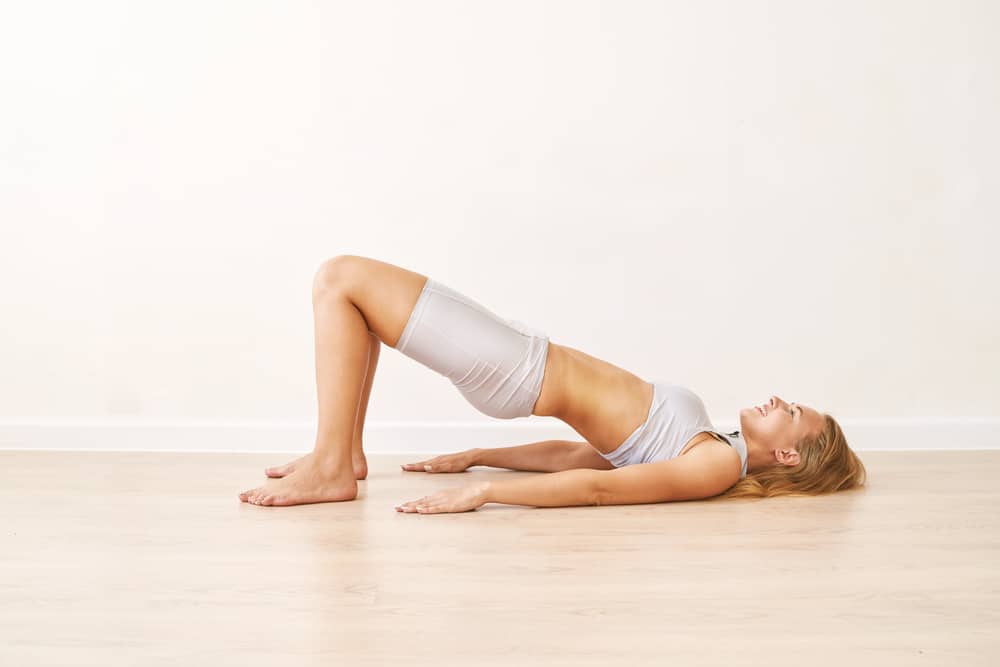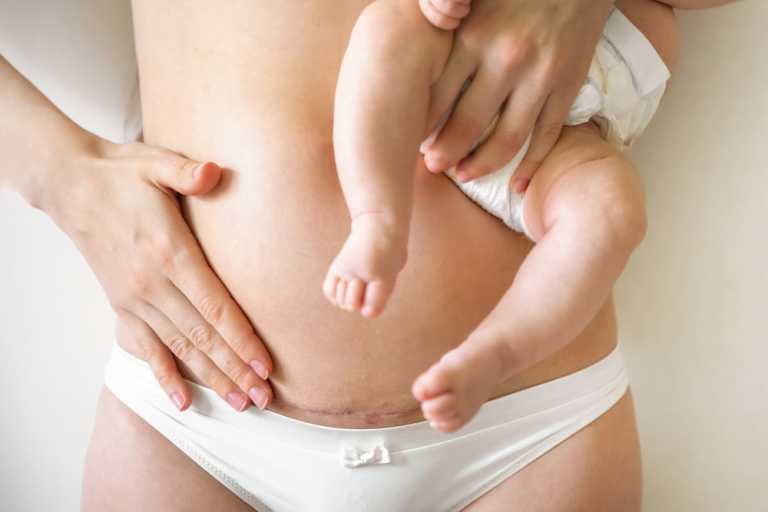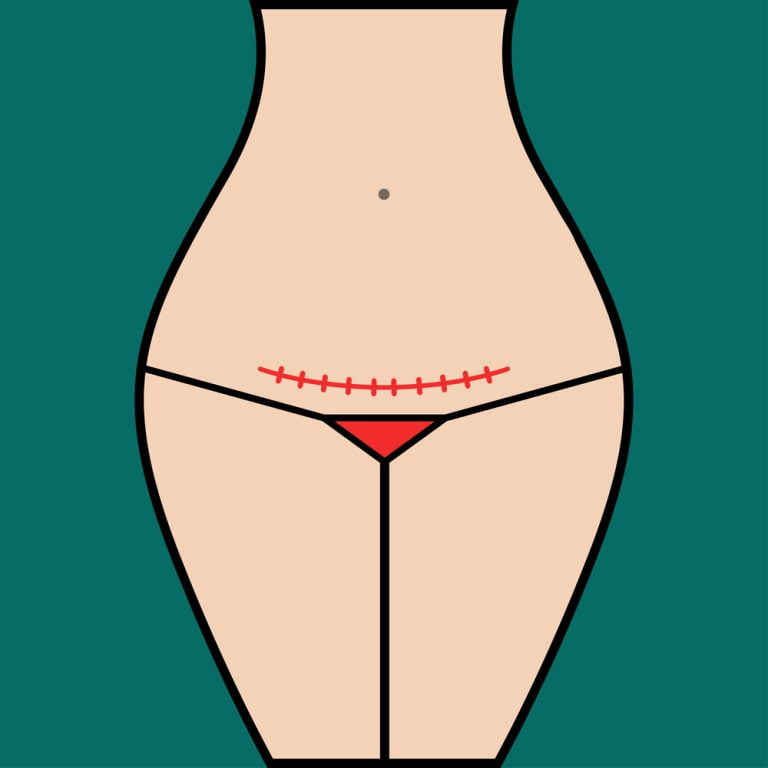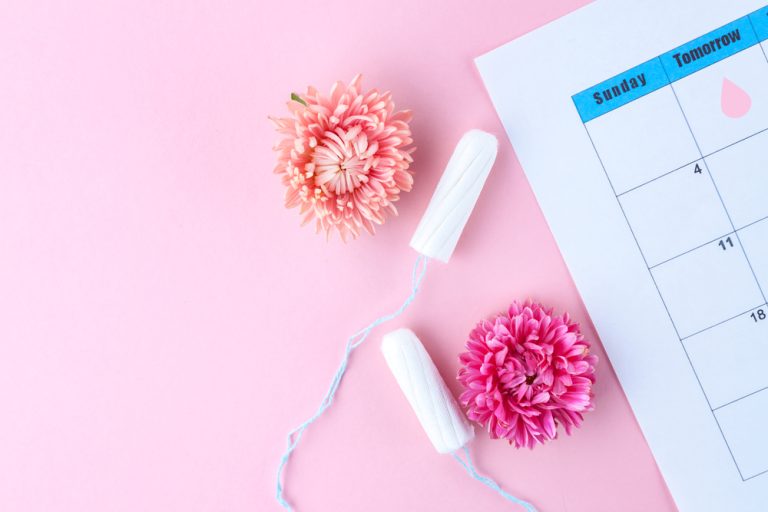Exercise can speed up your c-section recovery, improve your mental health, and increase your energy levels. It’s one of the best things you can do for your postpartum body.
Unfortunately, some exercises, like sit-ups, planks, and jumping, can do more harm than good. So, before you throw yourself back into anything high-impact, check out these 8 safe exercises for c-section recovery.
8 Safe Exercises to Do After Your C-Section
Effective exercise post-c-section will focus on four main areas—your floor, core, fitness, and strength. We’ve selected the best two exercises from each category and provided progressions to try as you get stronger.
Check with your doctor before you start. Although the following are safe in most cases, only your doctor knows the specifics of your c-section, recovery, and complications.
Pelvic Floor Exercises
Kegels
There’s a myth that having a c-section avoids damage to your pelvic floor. Unfortunately, it’s not the case, and you could still be facing urinary incontinence. The best way to avoid leaks is to strengthen your pelvic floor with Kegels. You can get started as soon as your catheter has been removed and you feel comfortable.
To do Kegels:
- Locate your pelvic floor muscles. These are the ones you’d use to stop a pee midstream.
- Lay down on your back and bend your knees.
- Squeeze only your pelvic floor muscles. Not your abs, thighs, or buttocks.
- Hold for 3 seconds.
- Repeat 10 times per set and aim for 3 sets per day.
- As you get stronger, progress to seated Kegels. The process is exactly the same, but sitting up will work the muscles harder.
Bridges
Bridges are a great 2-for-1 exercise. They’ll strengthen your pelvic floor and help rebuild your glutes following pregnancy. Without complications, they are safe to start between 4 and 6 weeks after your c-section.
To do bridges:
- Lie on your back with your knees bent and feet flat on the floor.
- Push through your heels, squeeze your glutes, and engage your pelvic floor to lift your hips. You are aiming for a straight line between your shoulders and knees.
- Hold for 2 seconds and lower your hips down to the ground.
- Repeat 15 times, rest for 1 minute, and repeat 15 times more.
- When you are feeling stronger, try adding a resistance band around your knees.
Abdominal Exercises
Pelvic Tilts
Pelvic tilts work the muscles under your rib cage, called the transverse abdominis muscles. Strengthening them will improve your core stability and pelvic floor control. Working them can even help improve diastasis recti. You can start at 4 weeks postpartum or as soon as you are pain-free.
To do a pelvic tilt:
- Lie on your back with bent knees and feet flat on the floor.
- Contract your abdominal muscles and tilt your tailbone to flatten your back against the floor.
- Hold for 5 seconds.
- Repeat 10 times per set and aim for 3 sets per day.
Wall Sits
Around 6 weeks after your c-section, you can start doing wall sits. These are a fantastic workout for your legs and a safe way to practice engaging your ab muscles.
To do wall sits:
- Press your back against a wall.
- Walk your feet 8–12 inches out and stand with them shoulder-width apart.
- Slowly lower yourself into a seated position. You should aim for a 90O bend in the knees.
- As you exhale, draw your stomach towards the wall.
- Hold for 30 seconds.
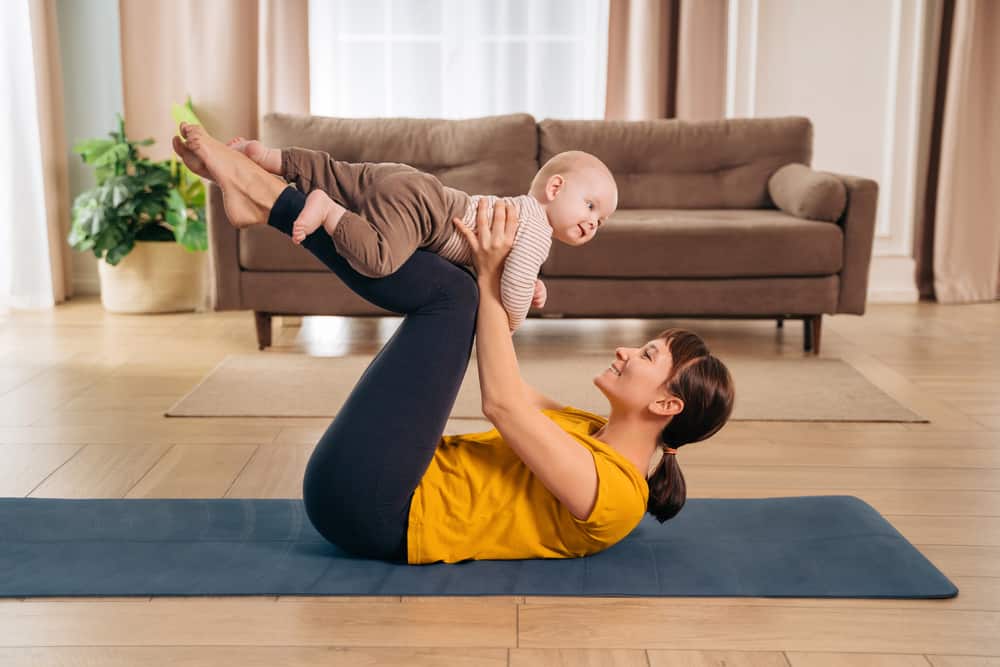
Cardio Exercises
Walking
The first exercise your doctor will encourage you to do after your c-section is walking. You can start on day one! Not only is it good for your physical health, but it’s also incredible for your mental health.
Here are the top tips for walking after a c-section:
- Start with short walks of 10 minutes.
- Take a rest if you feel any pain.
- For the first few weeks, you should avoid pushing anything, like a stroller. If you’d like your baby to join you for some fresh air, ask your partner, friend or relative to do the pushing.
- If you find walking uncomfortable, try an abdominal belt for extra support.
Swimming
One of the best postpartum exercises is swimming. It’s brilliant cardio, can assist in weight loss, and will also strengthen your core. However, it can be dangerous if done too soon.
To swim safely, you must wait until:
- You’ve stopped bleeding, and your cervix has fully closed. This can take 4 to 6 weeks. Going in the water too soon can allow bacteria to enter your uterus and cause an infection called postpartum endometritis.
- Your incision has healed. Again, this is to avoid wound infection, which could lead to rupture or sepsis.
- You have been given the OK by your doctor. Every c-section is different, and only your doctor will know if it’s safe for you to start swimming.
Bodyweight Exercises
Wall Push-ups
Wall push-ups are an easy way to strengthen your upper body and build those baby-carrying muscles. They’re also a safe way to regain some core strength, and you can start around 4 weeks postpartum.
To do a wall push-up:
- Stand facing a wall, just far enough away to place your palms flat against it.
- Brace your core.
- Bend your elbows to lower yourself towards the wall. Ensure your arms stay close to your body rather than spreading out to the side.
- When your face gets close to the wall, push yourself away.
- Repeat 15 times.
Squats
Without complications, you can start bending 6 weeks post-c-section. This means you can do squats, which will strengthen your lower body and stabilize your pelvis.
To perform a squat:
- Stand with your feet shoulder-width apart.
- Keeping a straight back, bend at the hips and knees as if you are sitting on a chair.
- Lower yourself as far as you can control.
- Squeeze your glute muscles and press down through your heels to push yourself back to standing.
- Complete 3 sets of 10, with a short break between each set.
- As you get stronger, try adding a resistance band around your knees.
Final Thought
The most important point is to listen to your body and never push through pain. If you are finding something uncomfortable:
- Talk to your doctor to see if there’s an issue with your recovery.
- Try a modification, e.g. try the exercise in a seated or lying position.
- If your c-section scar feels tight or you feel a pulling sensation, try massage.
- Give yourself time to heal and revisit the exercise in a few weeks.
